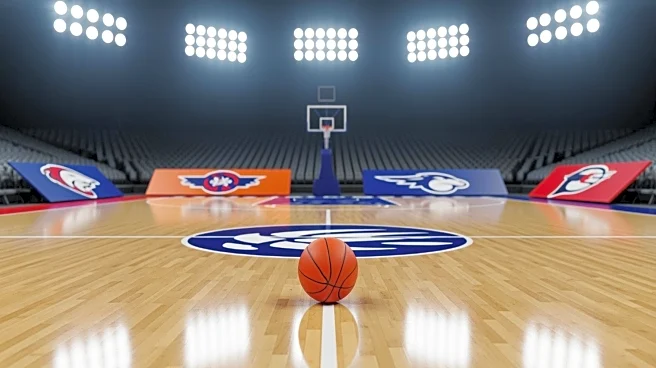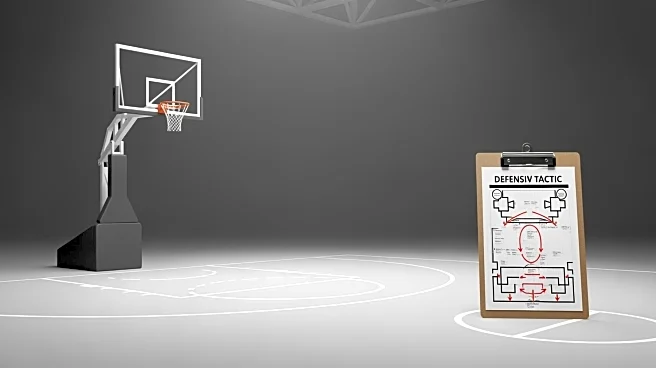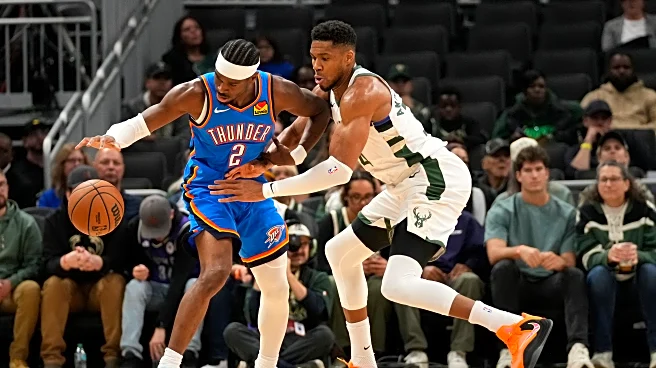What's Happening?
The Oklahoma City Thunder are facing challenges early in their NBA title defense as they continue to play without key player Jalen Williams. Williams is sidelined due to a right wrist injury, which required surgery during the offseason. Despite the setback,
Thunder coach Mark Daigneault has indicated that Williams is 'progressing' and 'right on schedule' for recovery. Williams, who was a third-team All-NBA selection last season, played a crucial role in the Thunder's championship run, often requiring pain-killing injections to manage his condition. The team is also missing Alex Caruso due to a concussion and Cason Wallace, adding to their lineup difficulties. The Thunder's upcoming game against the Indiana Pacers will be another test as they navigate these absences.
Why It's Important?
Jalen Williams' absence is significant for the Oklahoma City Thunder as they aim to defend their NBA title. Williams' contributions last season were pivotal, and his current injury could affect the team's performance and strategy. The Thunder's ability to adapt without Williams and other key players like Alex Caruso and Cason Wallace will be crucial in maintaining their competitive edge. This situation highlights the impact of player injuries on team dynamics and performance in professional sports, emphasizing the importance of depth and resilience in a championship team.
What's Next?
The Thunder will continue to monitor Jalen Williams' recovery, with his return timeline dependent on when he feels he can perform at 100%. The team will need to strategize effectively to compensate for his absence in upcoming games, including their matchup against the Indiana Pacers. As Williams works on regaining his jump shot and overall feel, the Thunder's coaching staff will likely explore lineup adjustments and rely on other players to step up. The team's ability to manage these challenges will be critical in their pursuit of another successful season.
Beyond the Headlines
Williams' injury and recovery process underscore the physical demands and risks associated with professional basketball. The necessity of pain management during high-stakes games raises questions about athlete health and long-term well-being. This situation may prompt discussions on the balance between competitive success and player safety, potentially influencing future policies on injury management and player support within the league.














